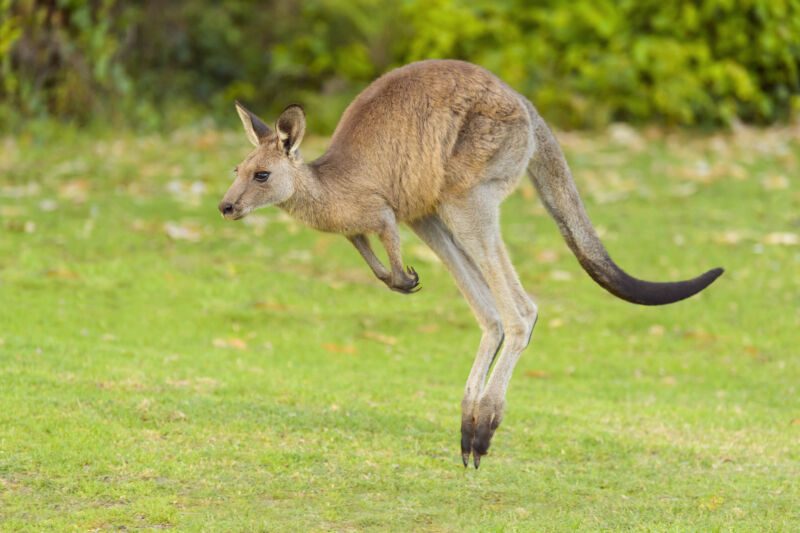
Shane Williams is always on the lookout for dead kangaroos. She keeps a can of red spray paint and a pillowcase in her car, just in case she finds one on the side of the road.
When Williams spots a roo, she hops out of her car to check for an orphaned joey, which might still be in its now-dead mother’s pouch. She then sprays the adult with a large pink cross so drivers will know the body has been searched. If Williams, the founder of Bridgetown Wildlife Rescue, finds a baby roo, she’ll hang it up in a pillowcase inside the car for the ride home. Sometimes, she said, when the animals are too small to generate their own heat, “you just put ‘em straight down your top.”
Williams has had plenty of opportunities to refine her technique, as kangaroos are one of Australia’s biggest traffic threats.
Wildlife hazards
Australia’s National Roads and Motorist’s Association estimated that over 12,000 of its insurance claims from 2018 were from kangaroo and wallaby collisions, accidents which cost upward of $5,000 AUD on average.
Over the past 20 years, car companies have pivoted from the old strategies of structurally reinforcing cars to designing prevention technologies that avoid crashes altogether. Car companies and researchers have spent years trying to create systems to detect or deter the animals. But so far, marsupials have presented a nearly impossible tech challenge, leaving communities to come up with alternative solutions to keep roos away from busy roads.
One issue is that collision-prevention systems for large wildlife were originally designed with a very different animal in mind: moose. Wildlife collision technology began in earnest due to increasingly prevalent moose crashes in Nordic countries. These crashes are serious, and if one occurs, the sheer weight of the animal—which is sometimes over 1,200 pounds—causes extensive damage to vehicle, moose, and human.
To mitigate these brutal impacts, Magnus Gens, a master’s vehicle engineering student at KTH Royal Institute of Technology partnered with Saab, a Swedish car company, to investigate how its cars could keep drivers safe in wildlife collisions. For his thesis, Gens built a life-sized moose dummy—crafted from 116 bright red rubber disks—to test on Saabs and Volvos. The dummy mimicked lethal moose accidents, which are especially dangerous when the mammal’s body mass rolls directly into (and through) the car’s windshield.
Saab’s participation in the project and continued wildlife-testing protocols initiated its reputation as a moose-proof vehicle manufacturer, while Gens won a long-belated Ig Nobel Prize for his research last year.
Volvo, however, was the first to market with a Large Animal Detection System, which debuted in 2016. It’s unique because it accurately detects and brakes for mammals when a driver doesn’t have time to respond manually. The system is equipped with a camera and radar that track how far away an animal is by using the ground as a reference point. The program can detect moose, elk, horses, and deer. But it can’t figure out kangaroos.
Completely irrational animals
That’s because kangaroos are completely irrational animals, said David Pickett, Volvo Australia’s technical lead. In 2015, Pickett was a part of the Volvo team that tried to develop the world’s first kangaroo detection and avoidance system by a major car manufacturer.
Pickett and a research team from Volvo headquarters in Sweden traveled to Tidbinbilla Nature Reserve near Canberra, Australia, where they spent a week driving up and down winding roads, watching their detection system attempt to account for kangaroos.
“We were able to drive through the Tidbinbilla, looking past and filming what the car saw, and look at the way the car would sort of react,” Pickett said. “Well, the car wasn’t reacting.”
It quickly became clear that ground detection wouldn’t work for animals with such a hoppy disposition. They look entirely different in full flight than when resting, and they’re fast. They jump in unpredictable ways, maneuvering mid-air to confuse and outrun predators.


























